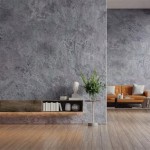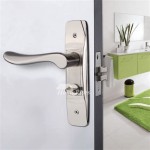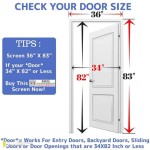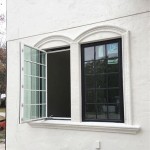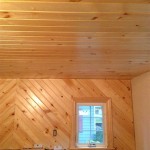How Much Does It Cost To Paint A 3000 Square Foot House Interior?
Painting the interior of a 3000-square-foot house is a significant undertaking. Understanding the potential costs involved can assist homeowners in budgeting effectively and making informed decisions about their painting project. The final cost will vary depending on a range of factors, but this article provides a comprehensive overview to help estimate the expenses involved.
Generally, interior painting costs are calculated in two primary ways: per square foot or per room. While some painters might offer a flat rate for the entire project, this is often based on an estimated square footage and complexity. For a 3000-square-foot house, the total wall surface area to be painted will be considerably larger than the floor area. The number of rooms, ceiling height, and the condition of the existing walls all contribute to the overall cost.
The complexity of the painting job also plays a role. A straightforward paint job with one color throughout the house will naturally cost less than a project involving multiple colors, accent walls, or intricate trim work. Similarly, if extensive surface preparation is required, such as patching holes, repairing drywall, or removing wallpaper, the labor costs will increase accordingly.
Factors Influencing the Cost of Interior Painting
Several key factors influence the overall cost of painting a 3000-square-foot house interior. These factors should be considered when gathering estimates and planning the project.
1. Surface Preparation: The condition of the walls significantly impacts the price. Walls with numerous holes, cracks, or imperfections require patching and sanding. If wallpaper removal is necessary, this adds a significant amount to the labor costs. Priming may also be required, especially if painting over a dark color or bare drywall. Thorough surface preparation is crucial for achieving a smooth and professional finish, and neglecting this step can result in a subpar outcome, potentially requiring additional work later.
2. Paint Quality and Type: The type and quality of paint chosen directly affect the overall cost. Higher-quality paints generally offer better coverage, durability, and washability. They are also more resistant to fading and mildew. While more expensive upfront, high-quality paints can save money in the long run by requiring fewer coats and lasting longer. Different types of paint, such as latex, oil-based, or specialty paints (e.g., low-VOC or mold-resistant), also have varying price points. The number of coats required also influences the amount of paint needed. Typically, two coats are standard, but covering a dark color with a lighter shade may necessitate additional coats.
3. Labor Costs: Labor typically accounts for a significant portion of the total painting cost. Hourly rates for painters vary depending on their experience, location, and the complexity of the job. Hiring experienced and reputable painters is crucial to ensure a high-quality finish. Obtaining multiple quotes from different painters allows homeowners to compare pricing and choose a contractor whose experience and pricing align with their budget and expectations. It is essential to verify the painter's credentials, insurance, and references before hiring.
4. Ceiling Height: Higher ceilings require more paint and increase labor time. Reaching high areas requires specialized equipment, such as ladders and scaffolding, which can add to the overall cost. Painting ceilings also often necessitates additional precautions to prevent dripping and splattering, further impacting labor time.
5. Trim and Accent Work: The amount of trim work, including baseboards, crown molding, and window casings, also influences the cost. Painting trim requires more precision and time than painting flat walls. Similarly, accent walls or intricate designs demand additional labor and may require specialized painting techniques, such as taping and stenciling.
6. Number of Colors: Using multiple colors throughout the house will increase the cost due to the extra time required for taping, masking, and cleaning brushes and equipment between colors. Each color change adds complexity to the project, requiring more careful planning and execution.
7. Geographic Location: Painting costs can vary considerably depending on geographic location. Areas with a higher cost of living typically have higher labor rates and material costs. Obtaining quotes from local painters provides a more accurate reflection of the prevailing rates in the specific area.
Estimating the Cost: A Detailed Breakdown
To provide a more concrete estimate, let's break down the costs associated with painting a 3000-square-foot house interior. These figures are estimates and can vary based on the factors discussed above.
Paint Costs: A gallon of high-quality interior paint typically costs between $30 and $60. Assuming two coats of paint are needed, and that one gallon covers approximately 350 square feet, a 3000-square-foot house with standard 8-foot ceilings will have roughly 12,000 square feet of wall space to paint. Therefore, approximately 35 gallons of paint will be required. This translates to a paint cost of $1050 to $2100.
Primer Costs: If priming is necessary, a gallon of primer typically costs between $20 and $40. The quantity of primer needed would roughly be the same as the paint, approximately 35 gallons. This would add $700 to $1400 to the total cost.
Labor Costs: Labor costs for interior painting typically range from $2 to $6 per square foot. For a 3000-square-foot house, this translates to a labor cost of $6,000 to $18,000. However, this range can be affected by the number of rooms and the complexity of the job.
Surface Preparation Costs: Surface preparation can add significantly to the cost, especially if extensive repairs are needed. Patching holes and cracks might cost $100 to $500, while wallpaper removal can range from $1 to $3 per square foot. If wallpaper removal is necessary for the entire house, this could add $3,000 to $9,000 to the overall cost.
Trim Work Costs: Painting trim typically costs more per linear foot than painting walls due to the detail required. It could range from $1 to $4 per linear foot. Estimating the linear feet of trim in a 3000 square foot home is difficult without knowing the exact layout, but assuming there are baseboards, door and window trim, crown molding (in some rooms) the cost could potentially be a further $500 - $2000.
Total Estimated Cost: Based on these estimates, the total cost to paint the interior of a 3000-square-foot house can range from $7,750 to $23,500. This is a broad range, and the actual cost could be higher or lower depending on the specific factors involved.
Tips for Reducing Interior Painting Costs
While painting the interior of a 3000-square-foot house can be a significant expense, there are several ways to potentially reduce costs without compromising on quality.
1. Do Some of the Prep Work Yourself: Preparing the surfaces yourself, such as patching minor holes, sanding, and cleaning the walls, can reduce the labor costs charged by the painters. This requires time and effort but can result in significant savings.
2. Obtain Multiple Quotes: Getting quotes from several different painters allows for comparison shopping and ensures that the price is fair and competitive. Be sure to compare apples to apples, ensuring that each quote includes the same scope of work and materials.
3. Choose Less Expensive Paint: While high-quality paint is recommended, selecting a mid-range paint can still provide good results at a lower cost. Research different paint brands and types to find the best balance between price and quality.
4. Paint During the Off-Season: Painters may offer lower rates during the off-season, such as winter or less busy periods. Inquiring about seasonal discounts can potentially save money.
5. Opt for Fewer Colors: Limiting the number of colors used throughout the house can reduce labor costs associated with taping, masking, and cleaning equipment between colors.
6. Bundle Services: If other home improvement projects are planned, bundling the painting project with other services offered by the same contractor may result in a discounted rate.
7. Consider DIY for Small Areas: Painting smaller areas, such as closets or hallways, can be a DIY project to reduce overall costs. This can be a good option for homeowners who have some painting experience and are comfortable tackling smaller tasks.
By carefully considering these factors and implementing cost-saving strategies, homeowners can more effectively manage the expense of painting the interior of a 3000-square-foot house. Accurate budgeting and thorough planning are key to achieving a successful and affordable painting project.

How Much Does Interior House Painting Cost A New Leaf

Cost To Paint A House Whole Painting Fixr

Cost Of Painting A House Interior Comprehensive Guide

How Much Does It Cost To Paint The Interior Of A House In Paintrite Pros

Average Cost To Paint A House Coloradopainting Com

How Much Does It Cost To Paint The Interior Of A House Angi

How Much Does It Cost To Paint A House Interior

Cost To Paint The Interior Of A House In 2024

How Much Does Interior House Painting Cost A New Leaf

How Much Does Interior House Painting Cost In 2024 Forbes Home
Related Posts

